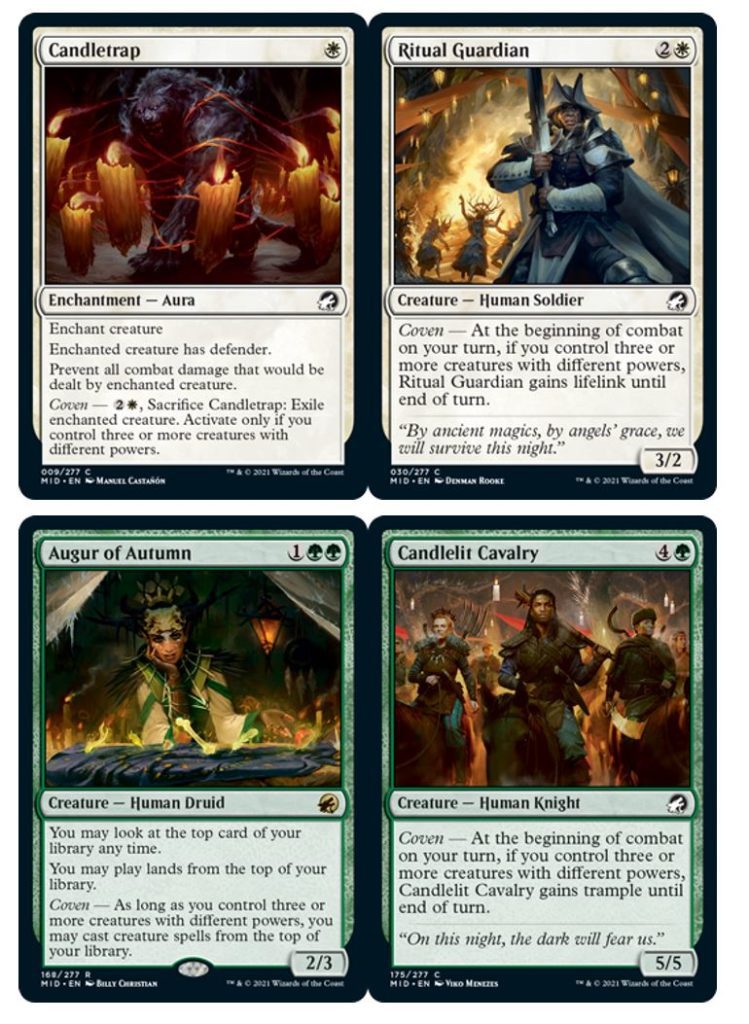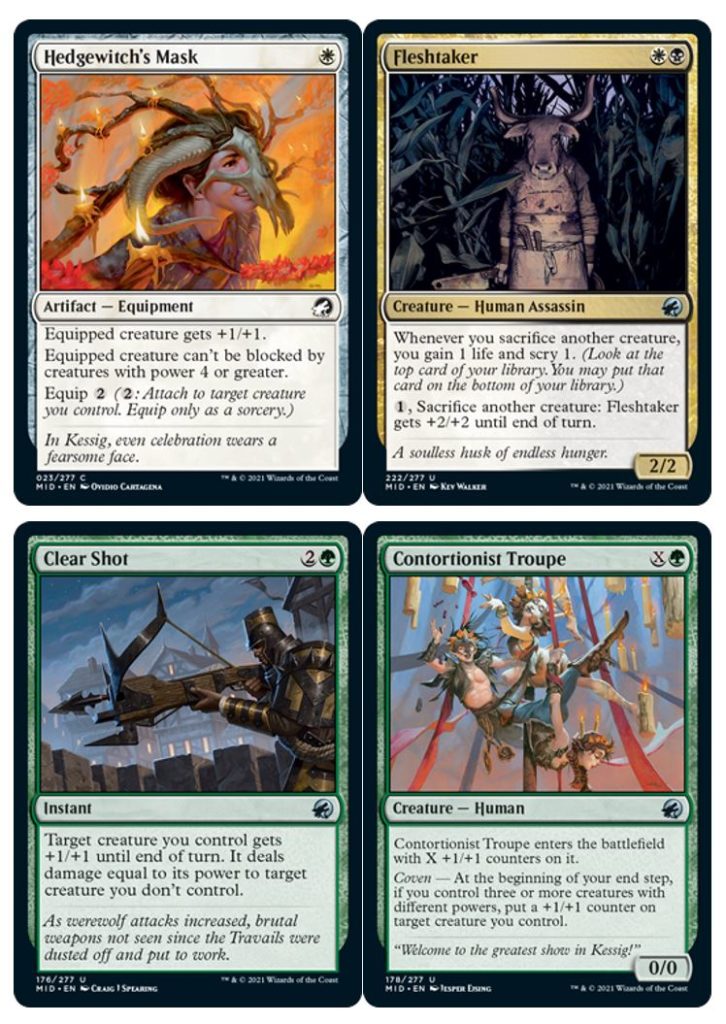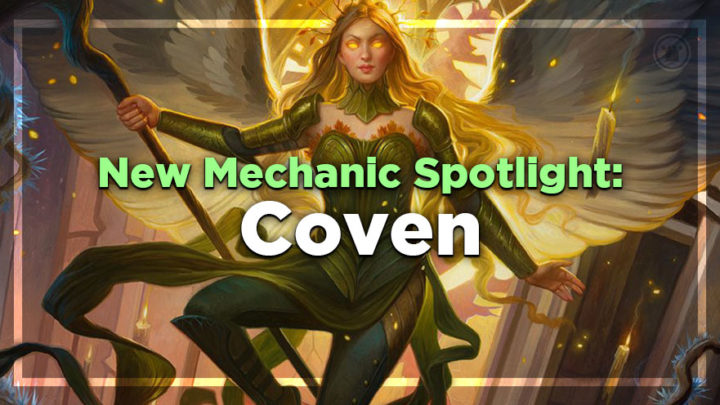“The strong will hunt the weak” seems to be the dominant philosophy of Innistrad: Midnight Hunt. But not all denizens of the haunted plane follow such twisted laws of nature! And we can see proof of this resistance in one of the set’s many innovative mechanics: coven.
Coven is a green-white mechanic, seen on the witches of Harvesttide, their human followers, and the angels who protect them from encroaching darkness. Sigarda and her allies still believe in the strength of community; that the great can protect the small, and that the whole is greater than the sum of its parts. The coven mechanic perfectly captures this “everyone’s important” attitude, rewarding you whenever you control three different-sized creatures simultaneously.
It’s important to note that the magic number for coven is always three — and power is always the stat to look at. It’s also a binary condition — you either meet that number or you don’t, and having four or five unique power values on the board is only relevant as a bit of insurance (so you won’t suddenly lose access to coven after one removal spell).

Being a binary condition means coven mostly appears on permanents as an activation requirement or recurring trigger, rather than an always-on static ability or single-use effect. Assembling your coven is already its own challenge — the prospect of getting blown out for losing coven status mid-combat or with a key spell on the stack would be too cruel, even for Innistrad!
BE (WITCH)CRAFTY ABOUT IT
I always think mechanics are more interesting when they tie in closely to the core game actions every deck reckons with: drawing cards, casting spells, playing lands, and of course, creature combat! Coven is definitely concerned with creatures and their power, but in a truly unique way compared to past mechanics like trample or ferocious.
As a result, there will be a lot of fun to be had discovering all the new, tricky ways you can manipulate your board state to set up coven on the fly. +1/+1 counters are the obvious place to start for GW. Luminarch Aspirant is perfect to sculpt a harmonious alignment of stat lines from whatever creatures you have at hand.

But you can also consider any “scalable” X-cost creatures, moving Equipment around, throwing out combat tricks ahead of your trigger… No effort is too great when it’s for the greater good of the coven!
VITAL COVEN SAFETY TIP
However, you should make absolutely sure you have the array of unique powers you need BEFORE moving to the step or phase where your coven cards trigger. Most coven triggers have the “intervening if” wording, which means it needs the condition to already be true as you put the trigger on the stack (as well as upon resolution to actually get the benefit). You don’t get the chance to “respond to the beginning of your end step” by pumping your team — so don’t miss out on the benefits of your jolly cooperation!
The other interesting aspect of coven is that it demands you commit to the board fairly significantly to see any results. We’ve spent a few years immersed in a Standard metagame where removal and sweepers are highly efficient, and creatures are prized for how much impact you can expect from them before the opponent untaps.
Coven doesn’t just ask you to go wide — it wants you to do so with your key creature cards and then leave them hanging out for a few turns while you stack triggers. It’s not a prospect for the faint of heart, but with GW receiving a steady stream of defensive tools and a slight easing off in the power level of mass removal, I can see aggro and midrange lists introducing an exciting and refreshing new playstyle to the meta.
SEASON OF THE WITCH
Coven continues what has been a remarkably strong streak of new Magic mechanics in the past 12 months. It provides incentives to examine core Magic gameplay through yet another new lens, and approach Constructed creature decks in a way that was otherwise falling out of fashion.
When new cards are able to define their effects in such general terms, it allows for open-ended synergy across the whole history of Magic — setting the table for both creative deck building and those memorable improvisations that can swing Limited games. Coven extends that beautifully complex web of possibilities to allow us to savor the thrill of exploration, even in a game nearing thirty years old.

Tom’s fate was sealed in 7th grade when his friend lent him a pile of commons to play Magic. He quickly picked up Boros and Orzhov decks in Ravnica block and has remained a staunch white magician ever since. A fan of all Constructed formats, he enjoys studying the history of the tournament meta. He specializes in midrange decks, especially Death & Taxes and Martyr Proc. One day, he swears he will win an MCQ with Evershrike. Ask him how at @AWanderingBard, or watch him stream Magic at twitch.tv/TheWanderingBard.

